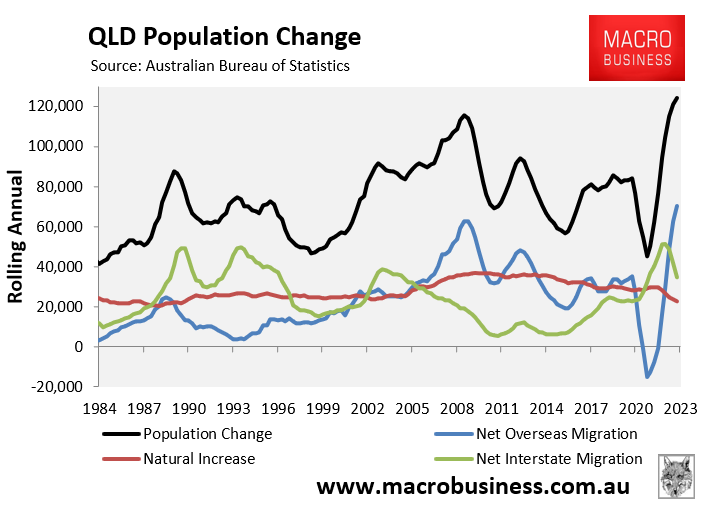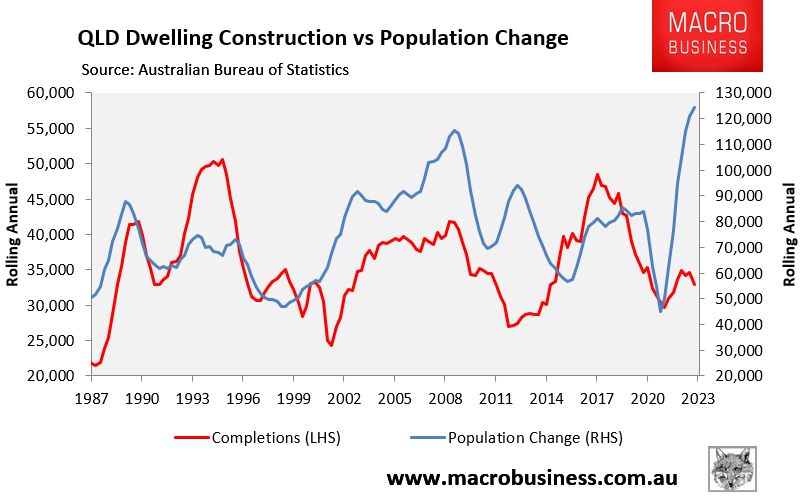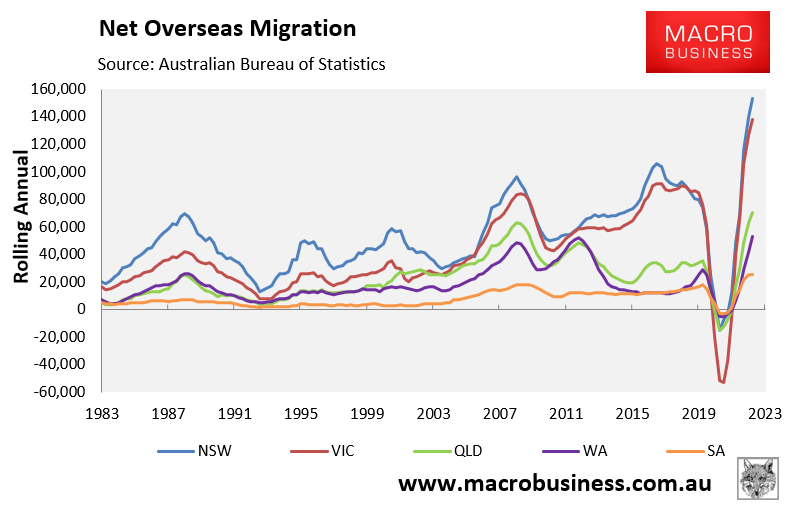Last week’s demographic statistics from the Australian Bureau of Statistics (ABS) showed that Queensland’s population surged by a record high 124,200 in the year to March, driven by unprecedented net overseas migration (NOM) alongside strong interstate migration:

The record population growth has occurred alongside a marked fall in housing construction across Queensland:

A new State of the Market Report H1 2023 report from consultancy Charter Keck Kramer warns that weekly rents and the price of new apartments in Brisbane are expected to rise at a “extraordinary” rate of up to 20% per year over the next two years, exacerbating the rental shortage and housing crisis.
The authors express “substantial concerns” about Brisbane’s housing crisis, which they claim is the most severe of any Australian city.
The report warns the Queensland government is “substantially underestimating” population growth, citing current NOM numbers that have outpaced previous government estimates:
“This is greater than levels observed prior to the onset of the pandemic and is acting as a key driver of housing demand for locations such as Brisbane”.
“Recent figures indicate that NOM arrivals have outpaced earlier government projections. Therefore, it is Charter Keck Cramer’s view that current population forecasts for the State are conservative with housing demand anticipated to be even stronger than the Government is predicting”.
“It’s going to take 10 years or more to get out of this crisis”, national executive director of research Richard Temlett warned.
The same arguments can be made about Sydney and Melbourne, where NOM has exploded to unprecedented levels:

The fact remains that Australia’s rental market will remain in a permanent state of crisis so long as the federal government continues to run such an extreme immigration program.
The solution to the housing shortage is obvious: ensure the immigration intake is commensurate with the nation’s ability to supply new homes and infrastructure.
Otherwise, the housing situation will continue to worsen.

